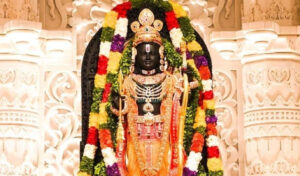Hanuman Garhi, Ayodhya – Hilltop Devotion & Divine Views
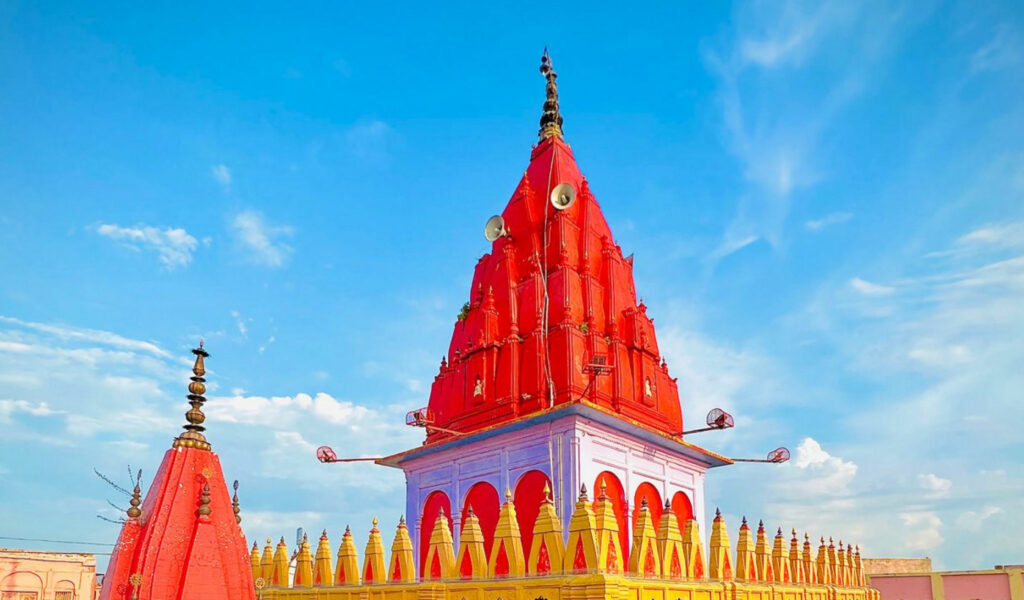
When you make a list of Ayodhya sightseeing places, Hanuman Garhi must be right near the top. As one of the most iconic Ayodhya tourist spots, it offers not just devotional power but also sweeping views, history, and architecture. If you’re seeking both spiritual connection and heritage charm, this temple complex is one of the top Ayodhya places to see—a must-visit place in Ayodhya for pilgrims, travelers, and those drawn to myth.
Where Is Hanuman Garhi?
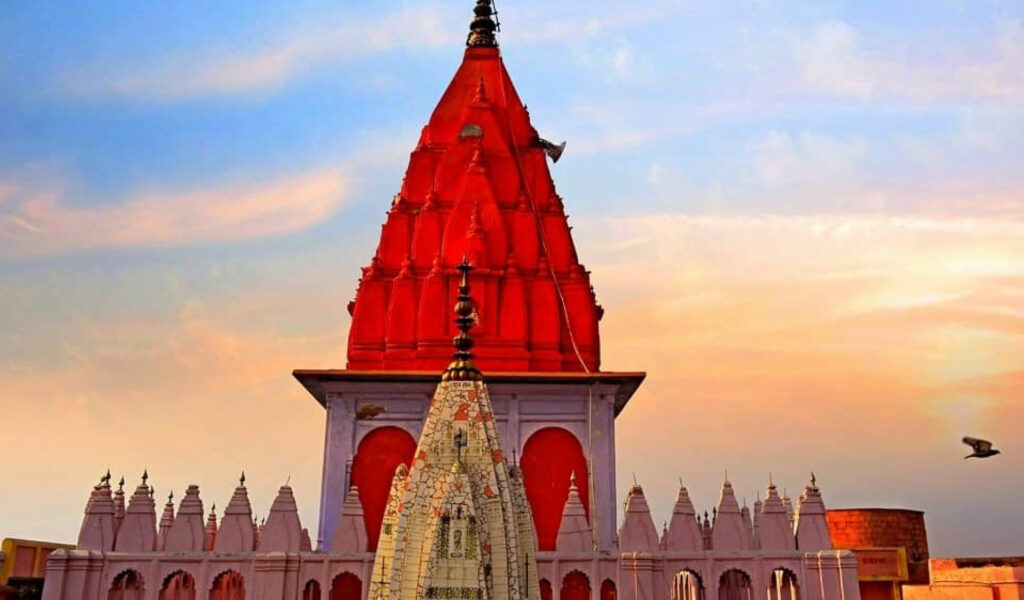
Hanuman Garhi is one of the most iconic Ayodhya sightseeing places, located right in the heart of the city. The temple sits on a hillock in the Ramkot area, just a short distance—around 1 km from Ayodhya Junction railway station—making it easily accessible for pilgrims and tourists alike. Its proximity to the Ram Janmabhoomi Temple ensures that it is always included among the top Ayodhya tourist attractions.
Reaching the shrine requires a short but sacred climb of approximately 75–76 stone steps, lined with shops selling flowers, prasad, and souvenirs. The climb itself is considered part of the pilgrimage, symbolizing devotion and surrender to Lord Hanuman. Once at the top, visitors are rewarded not only with darshan of the deity but also with breathtaking panoramic views of Ayodhya city and the serene Sarayu River flowing nearby.
The temple’s hilltop location gives it a fort-like appearance, with bastions and gateways that add to its grandeur. This elevated position has also made Hanuman Garhi a spiritual lookout point for centuries, offering both devotional significance and scenic charm, making it an unmissable place to visit in Ayodhya.
Mythological & Historical Significance of Hanuman Garhi
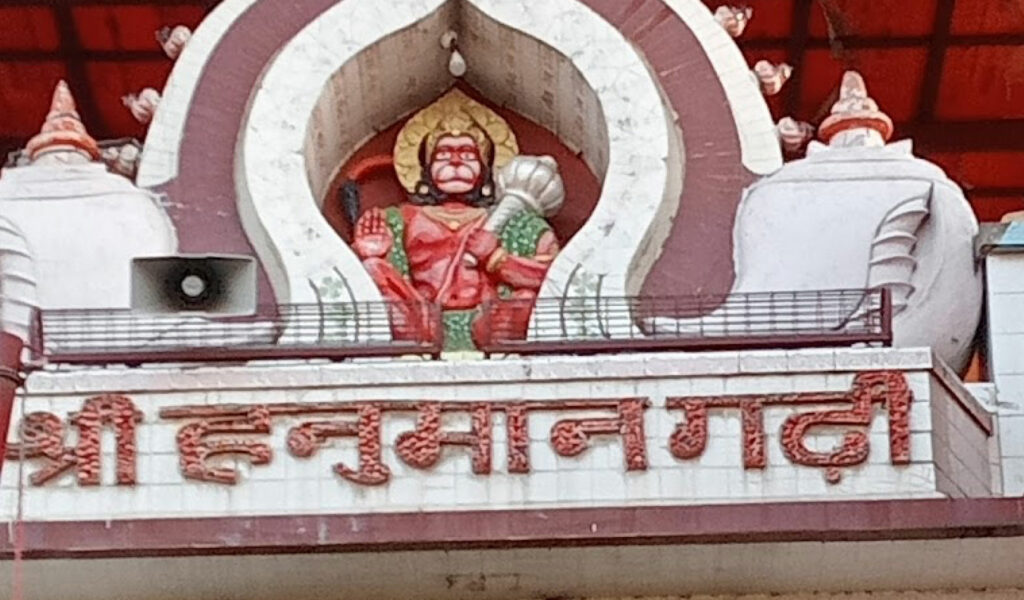
Hanuman Garhi is not just one of the most important Ayodhya tourist attractions, but also a temple steeped in legend and layered with centuries of history.
1. Hanuman’s Eternal Watch
According to local belief and the Ramayana tradition, Hanuman Garhi marks the spot where Lord Hanuman took residence after Lord Rama returned to Ayodhya following his victory over Ravana. From this elevated hilltop, Hanuman is said to have guarded the city and the Ramkot area, ensuring the protection of Rama’s birthplace. Devotees see this as symbolic of Hanuman’s eternal guardianship, loyalty, and strength.
2. Origins in the 10th Century
Historical records trace the roots of Hanuman Garhi back to around the 10th century CE, making it one of the oldest surviving temples in Ayodhya. Over the centuries, rulers, saints, and devotees have patronised and preserved the temple, strengthening its role as a central place of Hanuman worship in northern India.
3. Patronage & Restorations
The temple has undergone several restorations and reconstructions across different eras. Notably, during the Nawab period in Awadh, Nawab Wajid Ali Shah supported its renovation, adding to its structural durability and cultural importance. Despite these changes, the temple has preserved its fort-like grandeur, blending military-style defenses with devotional spaces.
4. Unique Architecture
Hanuman Garhi’s architecture makes it stand out among other Ayodhya sightseeing places. Its fort-shaped walls, gateways, and circular bastions resemble a small fortress, reflecting the protective role of Hanuman. Inside, however, lies an atmosphere of devotion, adorned with idols of Hanuman (often depicted as Bal Hanuman), silver embellishments, and intricate carvings. This combination of strength and sanctity makes Hanuman Garhi both a historical landmark and a vibrant living temple of worship.
Architecture of Hanuman Garhi
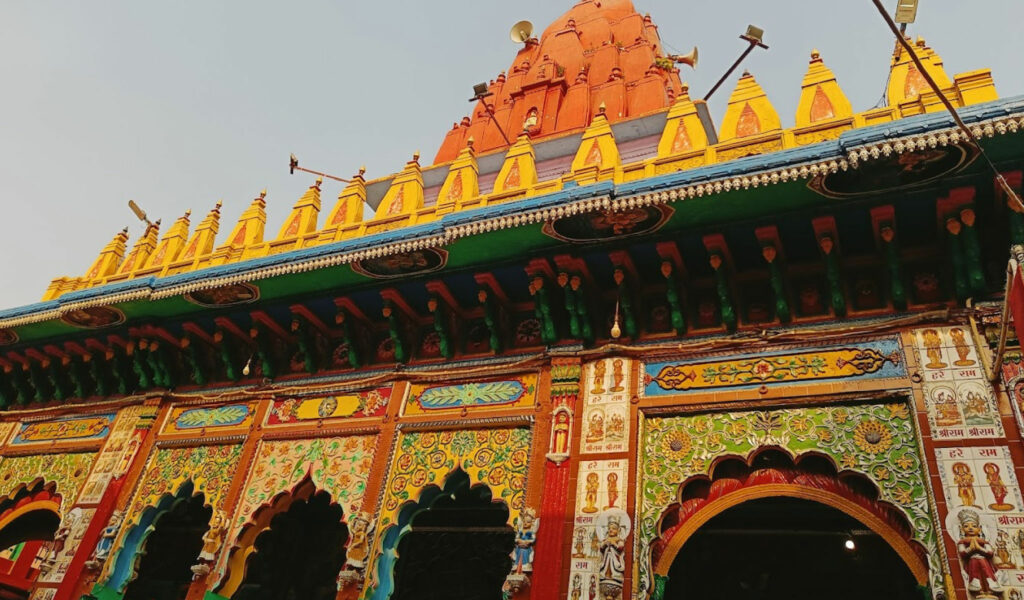
Hanuman Garhi is unique among Ayodhya sightseeing places because of its fort-like architecture. Unlike typical temple layouts, it resembles a small fortress with massive gateways, high walls, and circular bastions. The ascent of about 76 steps leads pilgrims to the shrine, creating a feeling of entering a fortified sacred space. Inside, the sanctum houses the idol of Bala Hanuman (child Hanuman) seated on Mother Anjani’s lap, adorned with silver embellishments. The temple complex includes courtyards and halls, reflecting layers of architectural additions from the 10th century onwards. This blend of defensive design and devotional detailing makes Hanuman Garhi one of the most distinctive Ayodhya tourist attractions.
What You’ll See & Do at Hanuman Garhi
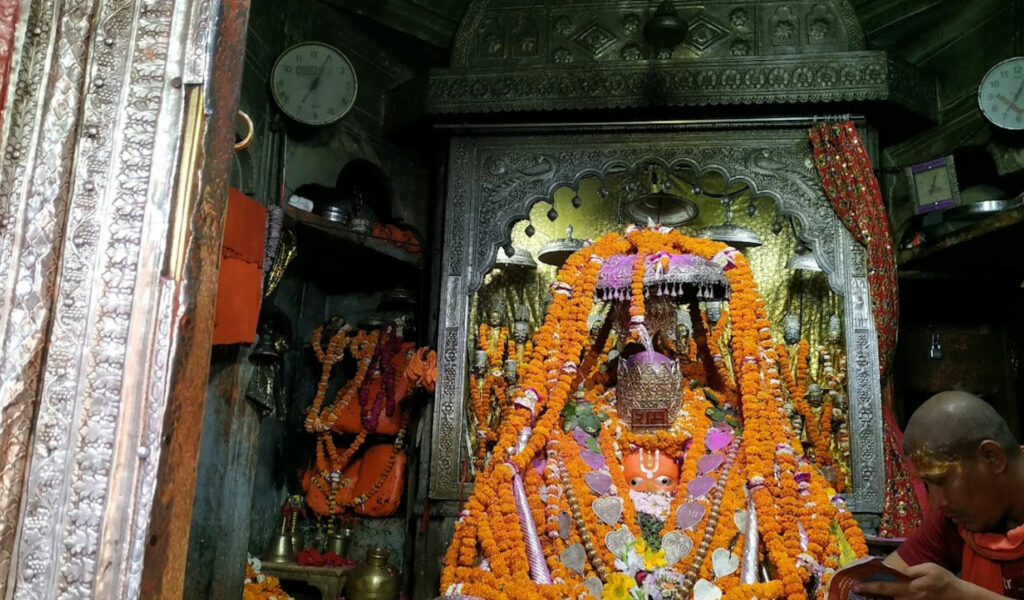
When you visit this tourist spot in Ayodhya, here’s what to expect:
1.The Ascent & View
You’ll climb about 75-76 stairs to reach the temple. As you go up, the city view opens up. The hilltop setting gives you a bird’s eye view of Ayodhya and the Sarayu riverbanks.
2.Main Shrine
At the top, you will find the central idol of Lord Hanuman, often in “Bal Hanuman” (young Hanuman) form, sometimes depicted sitting in the lap of Mother Anjani. Darshan here is the main devotional draw.
3.Victory Pillar & Architecture
Hanuman Garhi has fort-like walls with circular bastions, multiple doors, gates, etc. There’s a Victory Pillar (“Vijay Stambh”) inside or adjoining some temple complexes. The temple architecture has ornate elements, carvings, silver work, inscriptions.
4.Festivals & Rituals
Major festivals like Hanuman Jayanti, Ram Navami, Dussehra see large crowds. Daily aarti and puja, especially in the morning and evening.
5.Pilgrim Experience
Offers shops for prasad, flower vendors, spots to rest. Because it’s near the main pilgrimage areas, many visitors do Hanuman Garhi first (or early) before heading to Ram Janmabhoomi.
How to Reach, Nearby Places & Timing
• Getting There: Just about 1 km from Ayodhya Junction railway station – very walkable or a short taxi/auto ride.
•Stairs / Access: There are about 75-76 steep stairs to climb; can be tiring in crowd or heat. Plan accordingly.
•Temple Timings: Opens early morning (around 5:00 AM) for darshan, aarti, etc.; closes midday, reopens in late afternoon/evening.
Hanuman Garhi is not just a sacred temple but also surrounded by some of the most popular places to visit in Ayodhya. Just a few minutes away stands the divine Ram Janmabhoomi Temple, the birthplace of Lord Rama, drawing pilgrims from across the world. Nearby, the beautiful Kanak Bhawan shines with its golden idols of Lord Rama and Sita. Visitors can also enjoy a peaceful walk along the Sarayu River ghats or explore the local markets around the Chowk area, famous for sweets and souvenirs. The best time to visit is from October to March, ideally during early morning or sunset. Keep in mind that Tuesdays and Saturdays are busier, as devotees gather in large numbers to worship Lord Hanuman.
Ram Janmabhoomi Temple – The birthplace of Lord Rama, just a few minutes away.
Kanak Bhawan – A beautiful temple dedicated to Lord Rama and Sita, known for its golden idols.
Sarayu River Ghats – Peaceful spots for aarti and evening walks along the river.
Chowk Market – Bustling local market for sweets, crafts, and souvenirs.
Dashrath Mahal – The royal palace of Lord Rama’s father, King Dashrath, close to Hanuman Garhi.
Best Time to Visit: October to March, during early morning or sunset hours.
Tip: Tuesdays and Saturdays are busiest due to Hanuman worship.
GPS Coordinates of Hanuman Garhi
• Latitude: 26.7965° N
•Longitude: 82.1946° E
👉 You can paste these into Google Maps for direct navigation.
Suggested Itinerary: Hanuman Garhi & Nearby Ayodhya Tourist Attractions
Morning
•Start your day with Ram Janmabhoomi Temple darshan (early morning is peaceful).
•Walk or take a short ride to Hanuman Garhi – climb the 76 steps, visit the shrine, and enjoy panoramic views of Ayodhya.
•Explore Kanak Bhawan, a nearby temple dedicated to Rama and Sita, famous for its golden idols.
Late Morning
•Head to Dasharath Mahal, believed to be the royal residence of Lord Rama’s father.
•Stop by Treta ke Thakur Temple (open on special days) or smaller shrines in the Ramkot area.
Afternoon
•Lunch at a local eatery in Ayodhya’s Chowk area.
•Visit Nageshwarnath Temple, associated with Kush (son of Rama).
•Continue to Surya Kund or Bharat Kund if you want to explore lesser-known sacred ponds.
Evening
•Spend time at the Saryu River Ghats (Ram ki Paidi).
•Attend the Saryu Aarti, a mesmerizing ritual with lamps and chants by the riverside.
This itinerary ensures you experience both the most important Ayodhya tourist spots like Ram Janmabhoomi and Hanuman Garhi, as well as quieter gems like Surya Kund, ending the day with the spiritual charm of the Saryu Aarti.
Why Hanuman Garhi Should Be On Your Travel List
Hanuman Garhi is more than a temple—it’s a spiritual lookout, a place to soak in legend and view the city from a sacred height. For anyone exploring Ayodhya tourist attractions, it provides both devotional energy and panoramic beauty. If you want to balance the hustle of pilgrimage with introspection, this hilltop temple gives you both. It’s one of the most visited yet spiritually uplifting Ayodhya places to see.
Frequently Asked Questions (FAQ)
1. What is Hanuman Garhi and why is it important?
Hanuman Garhi is a hilltop temple in Ayodhya dedicated to Lord Hanuman. According to belief, Hanuman resided here after Lord Rama’s return, guarding Ramkot (the birthplace of Rama). It is one of the most important Ayodhya tourist attractions.
2. Where is Hanuman Garhi located?
The temple is in the Ramkot area of Ayodhya, about 1 km from Ayodhya Junction railway station and very close to the Ram Janmabhoomi Temple.
3. How many steps are there to reach the temple?
Devotees need to climb about 75–76 steps to reach the main shrine. The climb is considered part of the pilgrimage, though it may be challenging for elderly visitors.
4. Is there an entry fee?
No, there is no entry fee for Hanuman Garhi. The temple is open to all devotees.
5. What are the temple timings?
Hanuman Garhi generally opens around 4:00–5:00 AM for morning darshan, remains open till noon, reopens in the afternoon, and closes around 9:00–10:30 PM. Morning and evening aartis are special highlights.
6. What is the best time to visit Hanuman Garhi?
The cooler months of October to March are ideal. Early mornings are peaceful, while Tuesdays and Saturdays (Hanuman’s special days) and festivals like Hanuman Jayanti see large crowds.
7. What is unique about the temple’s idol and architecture?
The main idol depicts Bala Hanuman (young Hanuman) sitting on the lap of Mother Anjani. The temple itself has a fort-like design with circular bastions, gateways, and even a Victory Pillar (Vijay Stambh) associated with Hanuman’s feats.
8. Who manages Hanuman Garhi?
The temple is traditionally managed by Bairagi Mahants of the Ramanandi Sampradaya and Nirvani Akhara.
9. Are photography and mobiles allowed?
Photography is generally allowed in the temple complex and on the terrace, but visitors should avoid using cameras inside the sanctum during rituals. Shoes must be removed before entering.
10. Can elderly or physically challenged devotees visit?
The climb of 76 stairs may be difficult for elderly or differently-abled visitors, especially during festivals or peak hours. Assistance may be required.
11. What customs or dress codes should be followed?
Devotees are expected to wear modest clothing, remove shoes before entering, and maintain decorum inside the shrine. Offerings of flowers, sindoor, or sweets are common.
12. What festivals are celebrated at Hanuman Garhi?
Major festivals include Hanuman Jayanti, Ram Navami, and Dussehra, when the temple is beautifully decorated and grand celebrations take place.
13. Is Hanuman Garhi part of the Ayodhya pilgrimage circuit?
Yes. Many pilgrims visit Hanuman Garhi before Ram Janmabhoomi as it is considered auspicious. It is a key stop in most Ayodhya temple itineraries.
14. How long should I spend at Hanuman Garhi?
Most visitors spend 1–2 hours for darshan, exploring the temple, enjoying the views, and shopping for prasad or souvenirs outside.
15. What do past visitors recommend?
Travelers suggest visiting early morning for a peaceful experience, carrying water for the climb, and combining it with nearby sites like Ram Janmabhoomi and Kanak Bhawan.
Conclusion
Hanuman Garhi is more than just a temple; it is a spiritual landmark, historical gem, and cultural icon rolled into one. From its mythological association with Lord Hanuman guarding Ayodhya after Rama’s return, to its 10th-century origins and later restorations under rulers like Nawab Wajid Ali Shah, the temple reflects both devotional faith and architectural grandeur. The climb of 76 sacred steps leading to the hilltop shrine, the panoramic views of Ayodhya city and the Sarayu River, and the vibrant atmosphere of prayers and festivals make it a must-visit place in Ayodhya.
For anyone exploring Ayodhya tourist attractions, Hanuman Garhi offers a perfect blend of myth, history, and spirituality. Whether you seek blessings, heritage, or simply wish to witness Ayodhya from a divine vantage point, this temple promises an experience that will stay with you long after your journey. Truly, it is one of the most unmissable Ayodhya places to see.
Enroll in our Heritage Course to explore Hanuman Garhi and Ayodhya’s sacred sites virtually!
Recommended Tour
Related Blogs
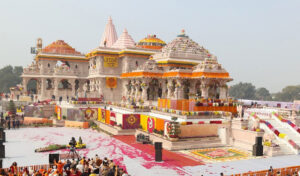
Sri Ram Janmbhoomi, Ayodhya – Where Divinity & History Meet

Experience India from Home: A Virtual Journey Through History and Culture
